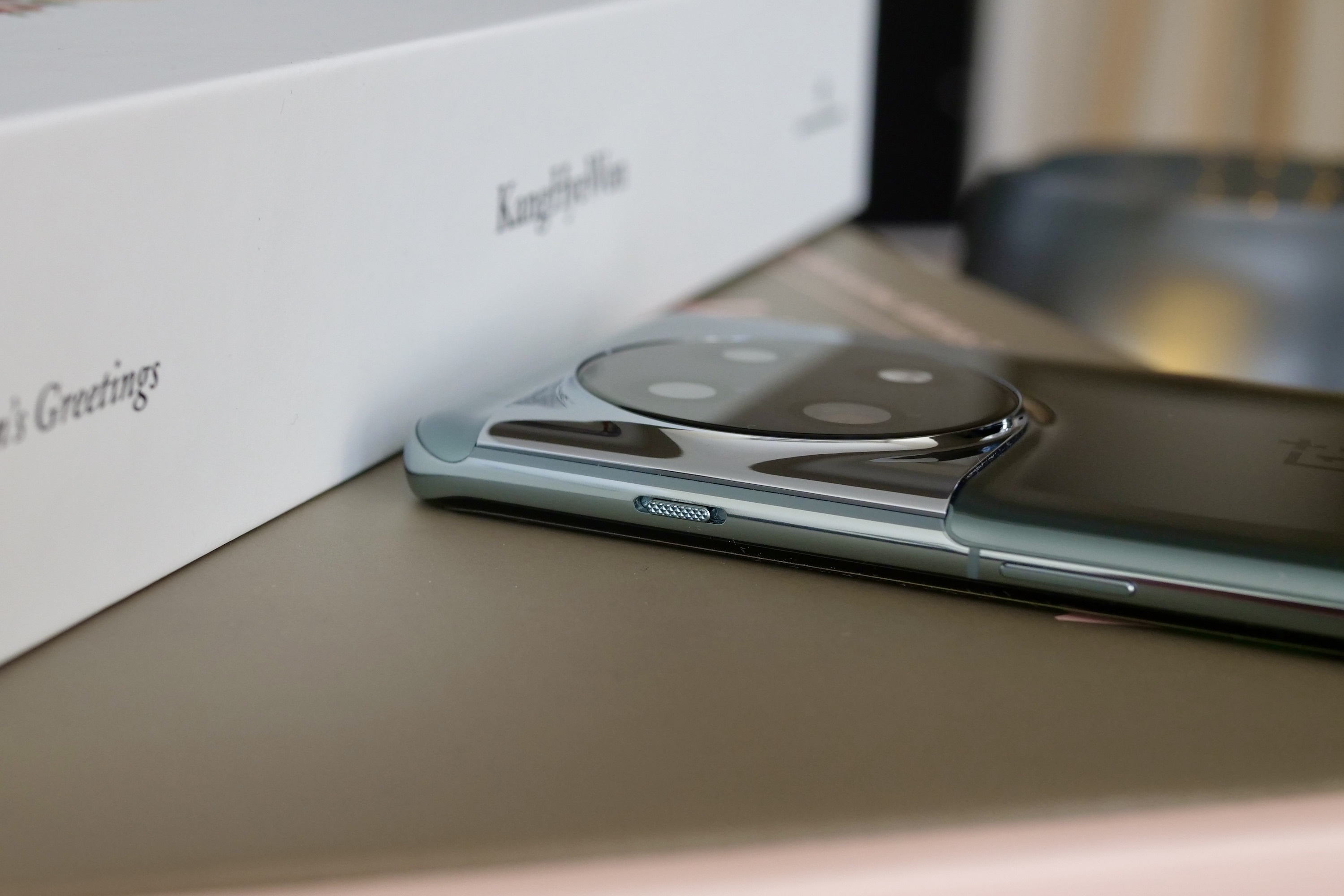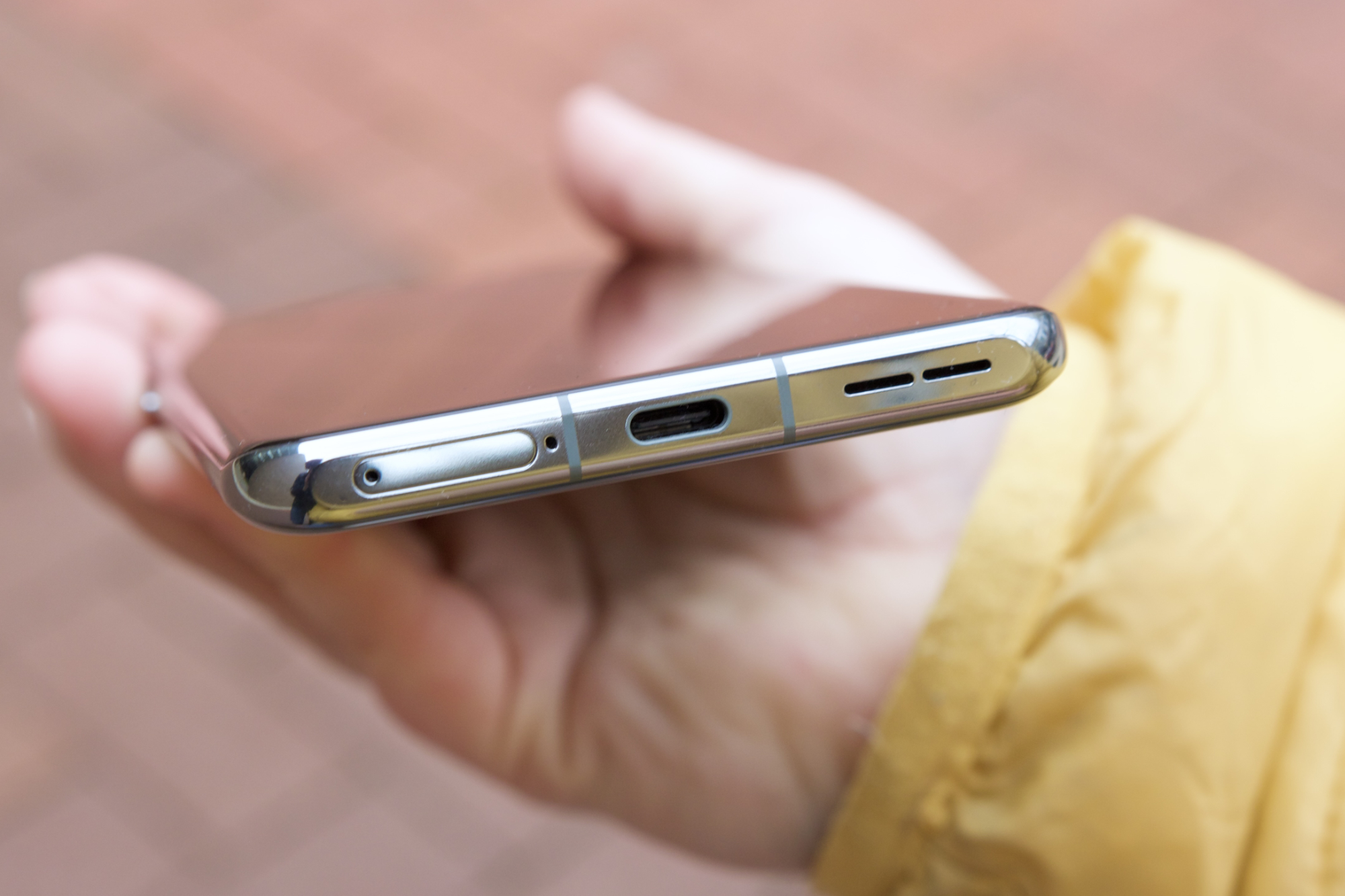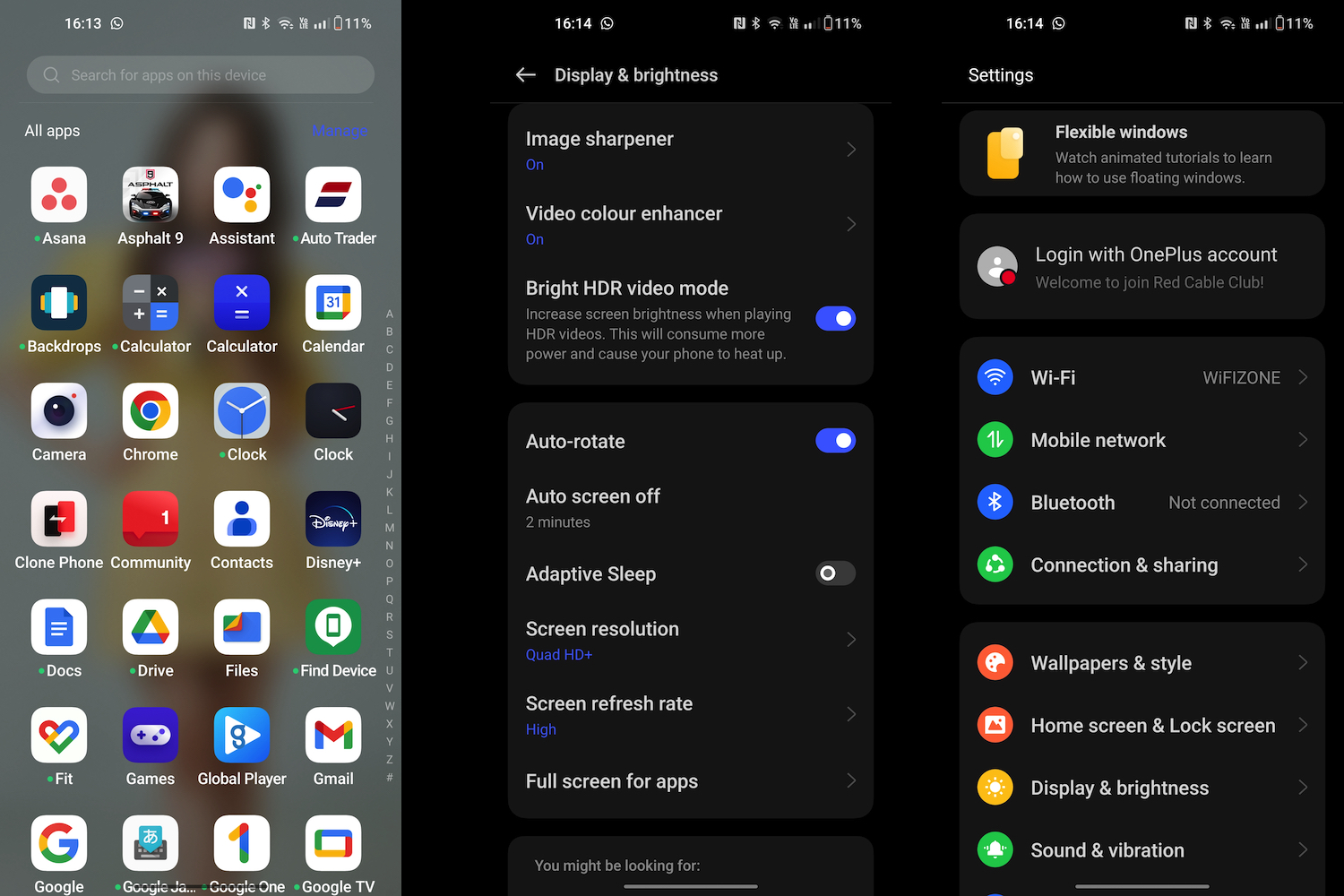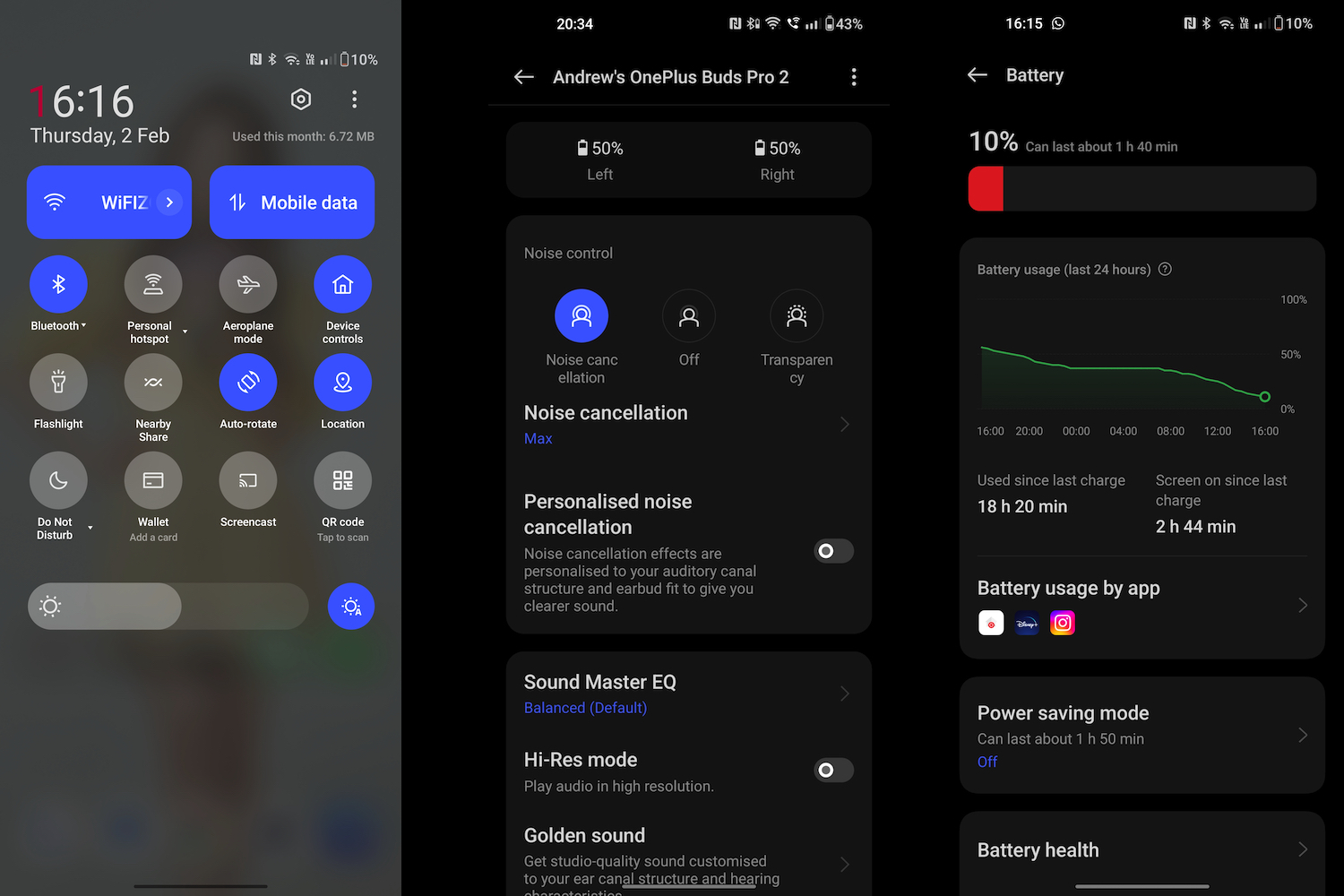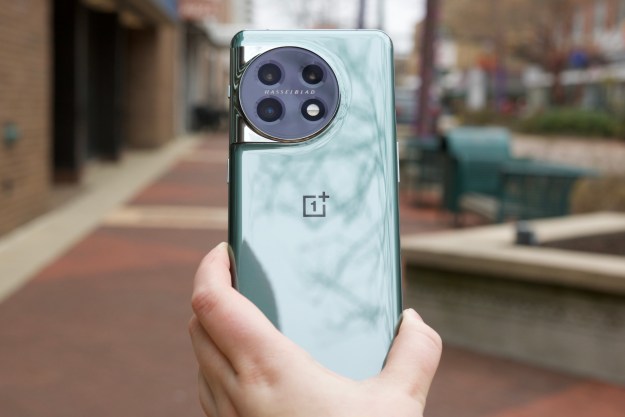
“The OnePlus 11's eye-catching design, incredible performance, characterful camera, long battery life, fast charging, and bargain starting price make it a real return to form.”
- Eye-catching design
- Two-day battery life
- 25 minute battery charging
- Characterful camera
- Long software update commitment
- No wireless charging
- Portrait camera disappoints
The OnePlus 11 carries a lot of weight on its shoulders. It needs to rescue the brand from the OnePlus 10T, a phone with a substandard software experience, made from low-cost materials, and equipped with a disappointing camera that robbed it of any desirability. The absence of the alert slider took away any last vestige of OnePlus-ness that remained.
The OnePlus 11 needs to be a great phone — and a great OnePlus phone. Can it succeed, or have the changes at OnePlus irreparably changed its phones?
About our OnePlus 11 Review
This review of the OnePlus 11 was written by Andy Boxall after using the phone in the U.K. for one month. The second opinion section was written by Joe Maring, who has also been testing the OnePlus 11 for the same length of time in the U.S. Both versions of the OnePlus 11 are unlocked models.
OnePlus 11 Review: design
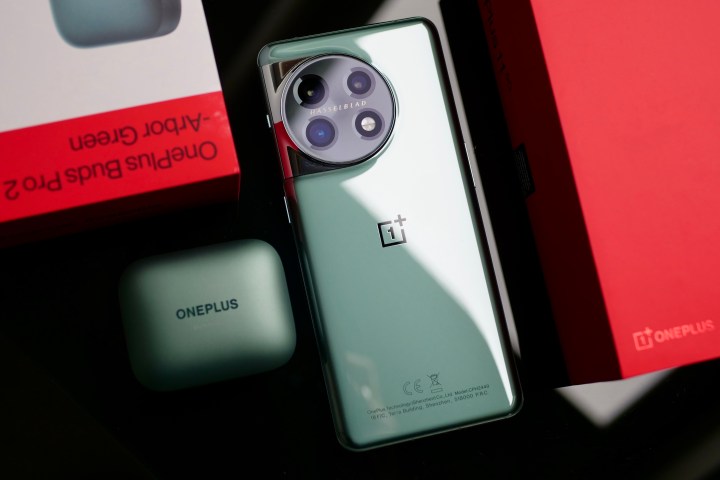
The OnePlus 11 is a beautiful smartphone. From the smooth glass to the unusually shaped camera module that adds so much visual interest to an otherwise ordinary shape, it grabs your attention, and the textured alert slider adds some much-needed physical interaction to give it some personality.
It’s slim at 8.5mm and modestly weighted at 205 grams. I’ve been using it without a case and do find it a little slippery. It will slide around on smooth surfaces too, so beware when you think it’s secure because it may have other ideas. I love the dimensions; it’s well-balanced and fits in my hand perfectly, the corners are expertly shaped and don’t dig into my palm, and the curved screen makes swiping the screen comfortable and easy even with one hand.
I like it when a phone doesn’t require me to think about the way I handle it, and the OnePlus 11 quietly just fitted into my life without any fuss.

The odd mixture of straight lines and curves around the camera module did take some getting used to, and although I never had a disliking for it, it was quite jarring at first. But over a few days, I began to see its appeal. It’s way more interesting than the square module on the OnePlus 10 Pro, the unusually sparkly effect around the lenses looks great in the sun, and even the Hasselblad branding isn’t too obnoxious.
Forced to complain, I’ll say the IP64 rating is a little disappointing when the iPhone 14, the Galaxy S23, and the Pixel 7 Pro all have IP68, and OnePlus still doesn’t prioritize durability or sustainability in general. It’s Gorilla Glass 5 on the back and Gorilla Glass Victus over the screen.
Elsewhere, Samsung is making advancements with its Armor Aluminum, has chosen to use Gorilla Glass Victus 2, and rightly boasts about its use of recycled materials. OnePlus isn’t really going down this route (at least, not so publicly), and still even includes a charger in the box. When others push longevity in a variety of ways, it stands out more when a brand places less emphasis on it.
Leaving this aside, and accepting the IP64 rating will still do the job in the rain, the OnePlus 11 is a giant leap forward compared to the OnePlus 10T. It’s the true successor to the OnePlus 10 Pro and OnePlus 9 Pro. The OnePlus 11 is a phone you’ll want to admire and hold, and when you do pick it up, it’s like shaking hands with an old friend; familiar and comforting. That said, it still wouldn’t be a bad idea to pick up a OnePlus 11 case to go along with your purchase.
OnePlus 11 Review: screen and audio
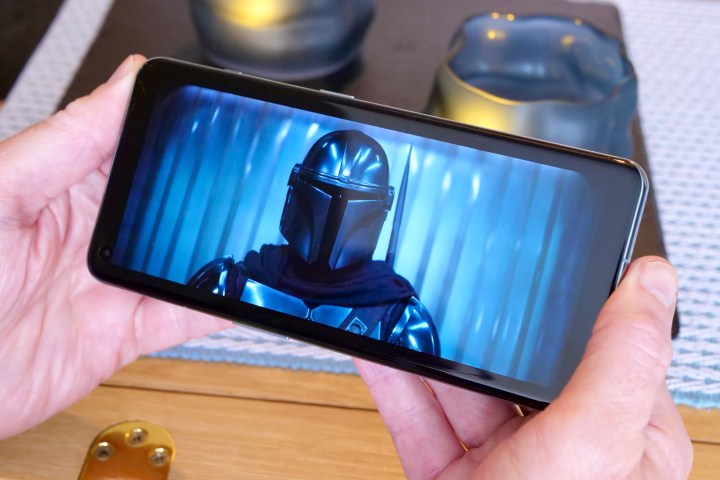
The OnePlus 11 has a 6.7-inch Super Fluid AMOLED screen with LTPO 3.0 technology (which minimizes flicker to decrease eye fatigue), a dynamic 1 to 120Hz refresh rate, 1,300 nits maximum brightness, Dolby Vision support, and a range of different features including image sharpening and color enhancement. The resolution can be switched to the maximum 3216 x 1440 pixels, but by default, it’s set to 2412 x 1080 pixels. The phone is equipped with stereo speakers and Dolby Atmos support.
It’s bright and sharp, with all the contrast and deep blacks you expect from a great AMOLED screen.
It’s not dramatically different from the OnePlus 10 Pro, but that’s not really a bad thing. It’s bright and sharp, with all the contrast and deep blacks you expect from a great AMOLED screen. Watching Disney+, specifically The Book of Boba Fett, shows it off really well, with masses of detail in shadowy scenes, and hyper-real colors. It’s not as natural as the iPhone 14 Pro’s color palette, or as warm, but unless you put them against each other, you won’t notice.
Audio quality is acceptable, but there isn’t much bass, and at anything approaching high volumes, the sound is harsh. This isn’t a problem with the OnePlus 11, but a problem with most smartphone speakers. Keep the volume sensible, and it’s clear and pleasant enough. I’ve also been using the phone with the OnePlus Buds Pro 2, which are excellent for music, but it’s a shame you have to dig through so many menus to adjust the settings.
OnePlus 11 Review: software

OxygenOS 13 is installed on the OnePlus 11, and it’s a variation of Oppo’s ColorOS 13. Not everyone appreciated the amalgamation of these two platforms, and admittedly I still miss the good old days when OxygenOS was a rival to Android on a Pixel phone. However, OxygenOS 13 is a considerable step forward over OxygenOS 12 in terms of visual appeal and usability.
It’s much smoother and far less laggy than before, there are fewer interruptions and the irritating system notifications have been minimized, and the default icon pack is attractive and well-designed. Dig into the Settings menu, and the layout is very similar to before, but subtle changes do make it less frustrating to explore. Animations are smooth, and best of all, I haven’t experienced any bugs or issues when running apps. I liked the more streamlined ColorOS 13 when I tried it, and OxygenOS 13 has been similarly frictionless to use each day.
There are some things that still annoy though. Notifications on the always-on screen are badly formatted, and Outlook still displays an old message when a new one comes through. The default alert sounds are mostly awful, and despite being better than before, I don’t need a notification telling me this app is using battery power and should be optimized. Leave me alone!
Added features are complicated to learn and use, and even features that should be simple (switching between noise cancelation modes on the OnePlus Buds Pro 2 is stupidly complicated) give the impression of being tacked on. I don’t like the Shelf feature and how it doubles up on a downward swipe on the home screen, either.
Back to some good news. The OnePlus 11 is the first phone to fall under the brand’s recent commitment to deliver four years of major Android OS updates and five years of security updates. That rivals Samsung’s commitment and beats the shorter commitment from Google. The durability may not quite match the competition, but the software update promise makes up for it.
OnePlus 11 Review: performance
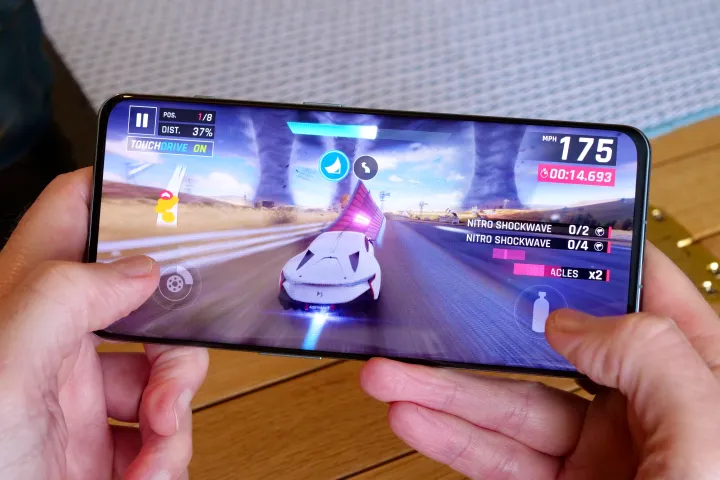
The software’s speed, no doubt, is assisted by the Qualcomm Snapdragon 8 Gen 2 processor and 16GB of LPDDR5x RAM in my review model. OnePlus says this adds up to the OnePlus 11 being 30% faster and 15% more efficient than the OnePlus 10 Pro. It’s not just fast — it’s effortlessly fast, by which I mean no matter what you do, it never seems to stutter.
I can play Asphalt 9: Legends for up to an hour and the phone doesn’t get hot at all, just a tiny bit warm to the touch. Inside the phone is a new vapor chamber made from new materials, promising much-improved heat dissipation. It genuinely seems to work, as nothing I do has stressed it at all, and all this power doesn’t have a negative effect on efficiency either, which I’ll come back to later.

Behind the scenes, there’s a special algorithm controlling the RAM that adapts to your use to increase speed and responsiveness over time. While there’s 16GB of RAM and 256GB of storage space in the phone I’ve been reviewing, you can also get an 8GB/128GB version. OnePlus estimates 44 apps can run in the background on the top model without any negative effect, so if you’re a multitasker, it may pay to get the top version.
Qualcomm excelled with the Snapdragon 8+ Gen 1, so I wasn’t expecting major advancements with the Snapdragon 8 Gen 2. I was wrong; it’s an absolute monster, and for anyone with a Snapdragon 8 Gen 1 or earlier phone, it’s a genuine reason to upgrade to the OnePlus 11. Judged purely on performance and ability here, the OnePlus 11 is the definition of a flagship smartphone.
OnePlus 11 Review: camera

OnePlus and Hasselblad continue to work together on the software side of the camera and extract the best from the 50-megapixel main camera, 48MP wide-angle, and 32MP Portrait Tele camera. There’s optical and electronic image stabilization on the main Sony IMX890, and a 115-degree field of view on the wide-angle, plus a special 13-channel Accu-spectrum Light Color Identifier sensor for accurate color reproduction.
This is the first time I’ve used a Hasselblad-tuned camera phone, and actually thought it has made a difference to the colors in my photos. There’s a good chance it’s a combination of the Hasselblad’s Natural Color Calibration technology and the Accu-spectrum Light Color Sensor at work here, having seen how Spectricity’s even more advanced sensor works recently. Colors look more realistic, white balance is more accurate, and photos are exposed more effectively when compared to the OnePlus 10 Pro.

I don’t consider the color profile to be overly saturated, and with some minimal editing, the OnePlus 11’s photos can really take on a life of their own, with an appealing character missing from Hasselblad-tuned cameras up until now. It’s an important step, as time was running out for the partnership to produce anything genuinely worth getting excited about. I’ve had fun experimenting with the OnePlus 11’s camera, and it has prompted me to go out and shoot street scenes in a new way. I like a camera that encourages me like this.
I like a camera that encourages me like this.
Unfortunately, it’s not great at close-up photography. There’s an automatic macro mode that kicks in when you get in close, but it robs the photo of color, and any depth of field generated by the main sensor disappears. Turn it off, and the OnePlus 11 often won’t focus very effectively, leaving a photo that looks confused. There’s no dedicated telephoto camera, and while the 2x zoom is acceptable, go past this to match the OnePlus 10 Pro’s 3.3x zoom, and it takes low-quality, pixelated photos.
Instead of a telephoto camera, the OnePlus 11 has a portrait-enhancing camera, which has been tuned by Hasselblad to replicate bokeh portraits from its XCD 30mm and 65mm camera lenses. It’s good, but it’s no substitute for a great zoom mode from a telephoto camera. Portrait shots are crisp and colorful, but edge recognition is still hit-and-miss, with the algorithm sometimes recognizing objects, but other times not, so you end up not trusting it. It’s also still obviously an artificial effect, and cannot properly replicate natural bokeh.
I appreciate the consistency between the main and the wide-angle camera, and also want to experiment more with the different Masters Mode filters provided by Hasselblad. They do subtly change the look of your photos, and I find them more interesting and usable than the Photographic Styles on the iPhone 14 Pro, although not everyone will feel the same way. The OnePlus 11’s camera has a lot to enjoy, and it seems the Hasselblad partnership is finally beginning to produce a camera worth using.
OnePlus 11 Review: battery

With moderate use, you’ll get two full days out of the OnePlus 11’s 5,000mAh battery, and if you play games or push the processor with music or video streaming for extended periods, it’ll still get close to the end of the second day before it needs a recharge. Use it lightly, and the Snapdragon 8 Gen 2’s efficiency shines through. I was astonished to find after an hour of browsing Chrome and using Twitter first thing in the morning, the battery hadn’t shifted from 100%.
Playing Asphalt 9: Legends for 30 minutes took 8% from the battery, while watching a 45-minute show on Disney+ at full brightness and resolution took only about 4%, and streaming radio using the Global Player app for about the same amount of time saw a minimal reduction of around 3%. The efficiency is obvious, even when the phone is working quite hard.
I’ve been solidly impressed with the OnePlus 11’s battery life.
You charge the battery using OnePlus’s included SuperVOOC charging block and USB cable. In the U.S., it’s an 80W system and charges to full in about 30 minutes. In the U.K., it’s a 100W SuperVOOC system and takes 25 minutes to charge fully. However, to get this speed, you must activate the Smart Rapid Charging option in the Settings menu.

If you don’t, and note that it’s off by default (at least on one of our review units), it takes 31 minutes to fully charge. The OnePlus 11 does not have wireless charging, which is unfortunate for a phone that’s otherwise very high-specification, but whether you miss it or not is another question. The incredibly fast charging makes occasional wireless charging less important on a day-to-day basis.
I’ve been solidly impressed with the OnePlus 11’s battery life. For my personal use, it lasts two days if I turn it off overnight, and the fast charging means I don’t worry about it dropping down to 10% during the day. If it does, in less than 25 minutes, it’s back to 100%. That’s life-changing, and I’ve not missed wireless charging, or actively thought about charging the phone at all. It just happens when necessary, and really doesn’t impact my day. It’s a big benefit you don’t get if you buy a Pixel 7, Galaxy S23, or iPhone 14.
If you want long battery life and charging that’s so fast you don’t have to specially plan time to do it, the OnePlus 11 is the phone for you.
OnePlus 11 Review: price and availability

The OnePlus 11, in its basic 8GB RAM/128GB storage form, costs $699, while the top 16GB/256GB version costs $799. Both versions come in Titan Black, but if you want the Eternal Green color seen in our photos here, you’ll need to splurge for the $799 model.
The phone is available for purchase now through OnePlus’ own store, Amazon, and Best Buy. In the U.K., the 8GB/128GB OnePlus 11 costs 729 British pounds, while the 16GB/256GB version costs 799 pounds.
Which version should you buy? There’s no option to expand the internal storage, so if you play a lot of games or store a lot of media (whether it’s music or your own photos and video), then paying more for the 256GB version may be a wise investment. The overall performance of the 16GB model is undeniable, but I doubt the 8GB version will be hideously slow. Consider the top model if you use multiple apps all day, though.
OnePlus 11 Review: second opinion
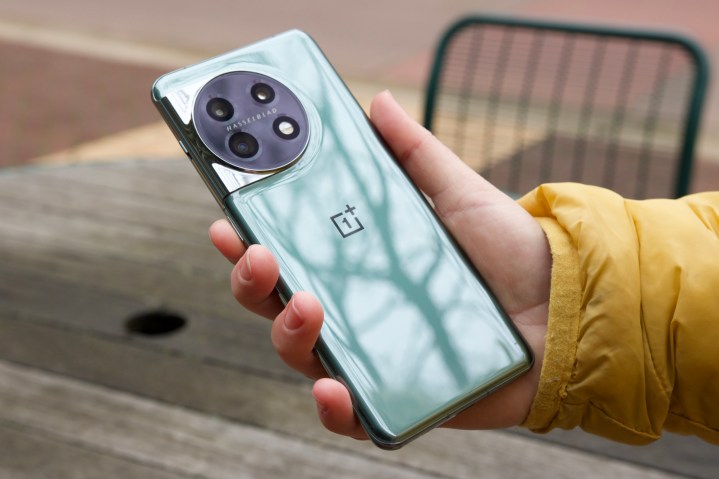
Andy and I had a few conversations debating what score we should give our OnePlus 11 review, and in doing so, it didn’t take long for both of us to land on the 9/10 score you see here. I largely agree with everything you’ve already read. The OnePlus 11 has a fantastic design, the screen looks great, the performance is top-notch, and the battery/charging experience is about as good as it gets.
One of the things about the OnePlus 11 that really stands out to me is its camera. I conducted a OnePlus 11 and iPhone 14 Pro camera test, thinking the iPhone would have an easy win. But to my surprise, the OnePlus 11 held its own far better than I expected.
- 1. OnePlus 11
- 2. OnePlus 11
- 3. OnePlus 11
I’ve captured some truly excellent photos with the OnePlus 11, especially when it comes to portrait mode and nighttime pictures. The OnePlus 11 consistently produces great results, and while the telephoto capabilities leave a lot to be desired, it easily stands out as OnePlus’ best camera showing to date.
Even more surprising to me is how I’ve come to appreciate OnePlus’ OxygenOS 13 software. Is it my favorite Android interface? No. But it’s also nowhere near as bad as it used to be. Animations are smooth, the whole interface feels incredibly snappy, and OnePlus makes some really thoughtful customization additions (like being able to adjust the dark mode intensity and change individual app icons).
I still miss the minimalistic approach of older OxygenOS versions, but OnePlus is making noticeable progress to make OxygenOS 13 as good as it can be.
At $699, I’d argue that the OnePlus 11 is a better overall purchase than the Google Pixel 7 and stiff competition for the Samsung Galaxy S23. And even if you upgrade to the $799 model, the phone is still a really solid value. The Galaxy S23 Ultra remains the current champ if you want the best Android phone possible, but if you don’t have that kind of cash to burn, the OnePlus 11 is an incredible runner-up.
OnePlus 11 Review: Verdict

The OnePlus 11 is a real OnePlus phone. It’s polished, expertly made, ergonomic, and very pretty. The camera takes very shareable photos that have their own character, and I have the feeling an expert editor can make them into something really special. The battery life is excellent, and the fast charging is desirable and sets it apart from the competition. While the software isn’t quite as wonderful as OxygenOS of old, it’s much better than before. And yes, the phone has an alert slider, just like a OnePlus phone should.
It’s also a bit of a bargain. The $700 starting price in the U.S. puts it in direct competition with the Google Pixel 7 and crucially undercuts the Pixel 7 Pro and the Galaxy S23. That’s a very tempting price, and it feels and performs like a phone that costs more.
That’s another reason it’s a proper OnePlus phone. The OnePlus 11 is a proper return to form for a company that was in danger of losing its way — and we highly recommend it.
Editors' Recommendations
- Your Pixel 7 is about to get a whole lot less buggy — here’s why
- The Galaxy Watch 6 may fix one of the Galaxy Watch 5’s biggest mistakes
- What is 5G UC? Here’s what that icon on your phone really means
- The best voice-recording apps for iPhone and Android in 2023
- Watch the Galaxy S23 Ultra and iPhone 14 Pro Max face off in brutal drop test


